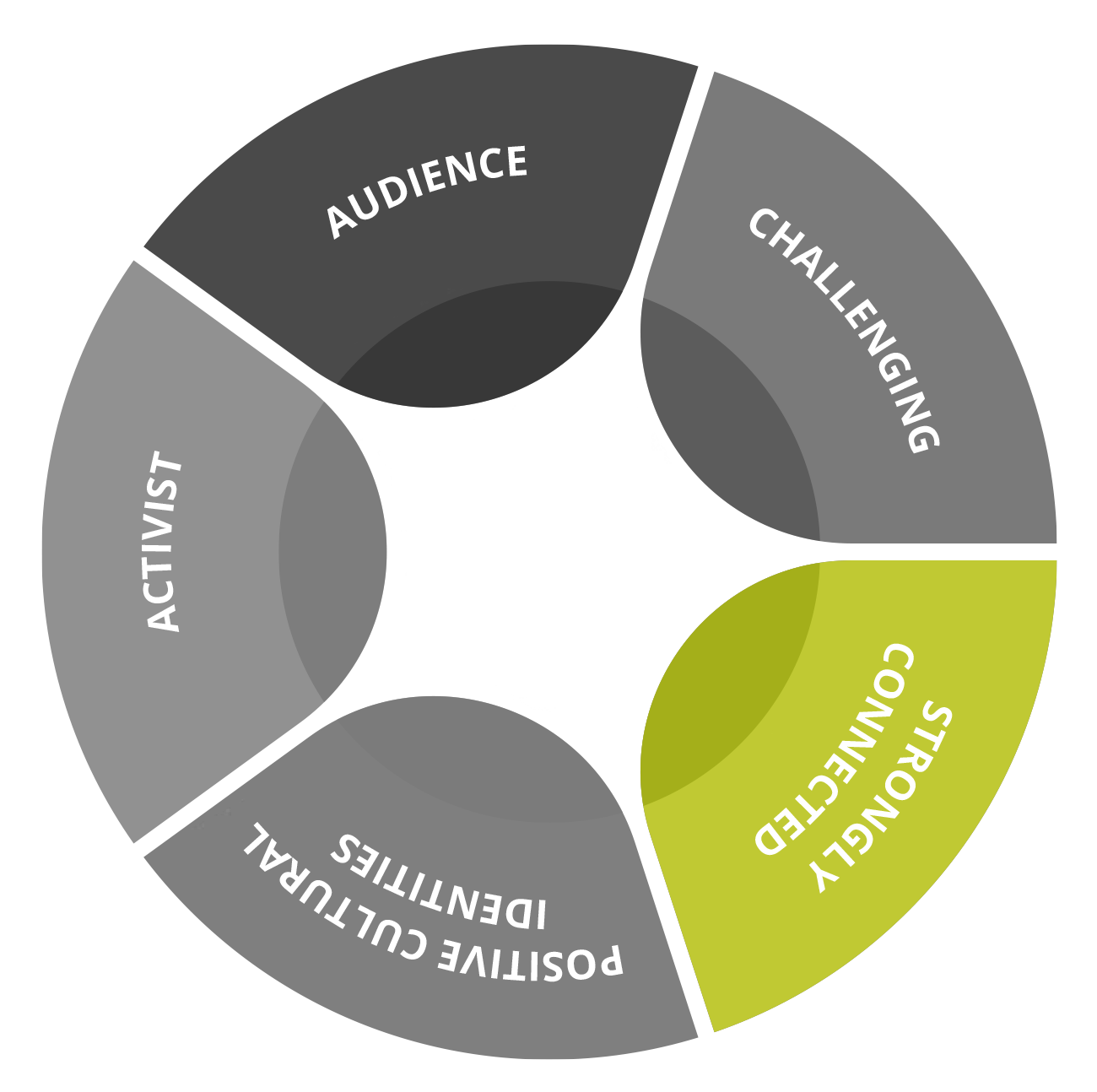By ‘lifeworld’ we mean that site in time and space in which we all live, sometimes referred to as ‘everyday life’. In a similar vein, Roche (1987) defines the lifeworld as ‘the social world as subjectively experienced, and communicated, as acted in and acted upon’ (p. 283). The idea of a lifeworld directs our attention to the phenomenology of being human and hence to embodiment, temporality, desire, emotions, spaciality, communication, practice, reflexivity, consciousness, knowledge/power and intersubjectivity.
an identity for each and every one of us.
By ‘lifeworld’ we mean that site in time and space in which we all live, sometimes referred to as ‘everyday life’.
How is the concept applicable for teachers?
The argument for lifeworld relevance of the curriculum is not a new idea and has taken various forms in the past. Lifeworld knowledge may include community knowledge, local knowledge, personal experience, media and popular culture sources. Whilst not an exhaustive list, the following list indicates various aspects of students’ lifeworlds that might provide themes for curriculum design:
- the keywords students use in their vernacular language;
- their cognitive and affective levels in class;
- the sorts of texts they read;
- the nature of their engagement with popular culture;
- key sites of their learning out-of-school;
- their understandings of the issues facing their communities;
- their fears in the present and their desires for their future.
Luis Moll and various colleagues have developed, theoretically and practically, a ‘funds of knowledge’ approach as a counter-discourse to scripted and over-determined curriculum designs. Alternatively, a local literacies approach advanced by Street (1994) and Luke, Comber and O’Brien (1994) proposes the need for access and validity in school settings for vernacular literacies (McLaughlin, 1997) closely associated with subcultures that are marginal, misrepresented or absent in mainstream institutions. And in a similar vein, the ‘unofficial curriculum’ of popular culture and out-of school learning settings provides another productive site for ethnographies of vernacular, popular and sub-cultures that young people inhabit around and beyond school (Scherpf 2001; Dimitriadis & Weis 2001). More recently, there has been interest in ‘place-based’ education that argues for curriculum that enables ‘students to connect what they are learning to their own lives, communities, and regions’ (Smith, 2002). The ‘multiliteracies’ project (New London Group, 1996) argues for ‘situated practice’, or that part of curriculum that aims to ‘recruit learners’ previous and current experiences, as well as their extra-school communities and discourses, as an integral part of the learning experience’ (p. 85). In a similar vein, the ‘productive pedagogies’ approach adopted by the Queensland Department of Education, Training, and the Arts (2006) proposes that ‘students engage with real, practical or hypothetical problems which connect to the world beyond the classroom, which are not restricted by subject boundaries and which are linked to their prior knowledge’ and ‘has value and meaning beyond the instructional context, making a connection to the larger social context within which students live’. Shor (1988) also refers to ‘situated’ pedagogy’, which he defines in these terms: ‘[t]he course is … situated in the language, statements, issues and knowledge students bring to class. Their cognitive and social situation is the staring point, not my prefabricated syllabus’ (p. 108). All of these approaches, in one way or another pursue a theory and practice of teachers as ethnographers and students-as-researchers (Egan-Robertson and Bloom, 1998; Kincheloe & Steinberg, 1998; Steinberg & Kincheloe, 1998; Thomson & Comber, 2003).
References
Dimitriadis, G. & Weis, L. (2001) Imagining possibilities with and for contemporary youth: (re)writing and (re)visioning education today, Qualitative Research 1(2): 223-240.
Egan-Robertson, A. & D. Bloom, Eds. (1998) Students as Researchers of Culture in Their Own Communities. Cresskill, NJ, Hampton Press.
The Department of Education, Training and the Arts, (2006) Connectedness. http://education.qld.gov.au/corporate/newbasics/html/pedagogies/connect/con0.html
Kincheloe, J. & S. Steinberg, Eds. (1998) Unauthorized Methods: Strategies for Critical Teaching. London, Routledge.
Luke, A., B. Comber, et al. (1994) Making Community Texts Objects of Study. Australian Journal of Language and Literacy 17(2): 139-149.
McLaughlin, T. (1997) Street Smarts and Critical Theory: Listening to the Vernacular. Madison, Wi., The University of Wisconsin Press.
New London Group (1996) A Pedagogy of Multiliteracies: Designing Social Futures. Harvard Educational Review 66(1): 60-92.
Roche, M. (1987) Social theory and the lifeworld. British Journal of Sociology 38(2): 283-287.
Scherpf, S. (2001) Rap pedagogy: The potential for democratization. The Review of Education/Pedagogy/Cultural Studies 23(1): 73-110.
Shor, I. (1988) Working hands and critical minds: A Paulo Freire model for job training. Journal of Education 170(2): 102-121.
Smith, G. (2002). Place-based education: learning to be where we are. Phi Delta Kappan April: 584-594.Steinberg, S. & J. Kincheloe, Eds. (1998) Students as Researchers: Creating Classrooms that Matter. New York, Falmer.
Street, B. (1994) What is meant by local literacies? Language and Education 8(1&2): 9-17.
Thomson, P. & Comber, B. (2003) Deficient ‘disadvantaged students’ or media-savvy meaning makers? Engaging new metaphors for redesigning classrooms and pedagogies. McGill Journal of Education 38(2): 305-328.

